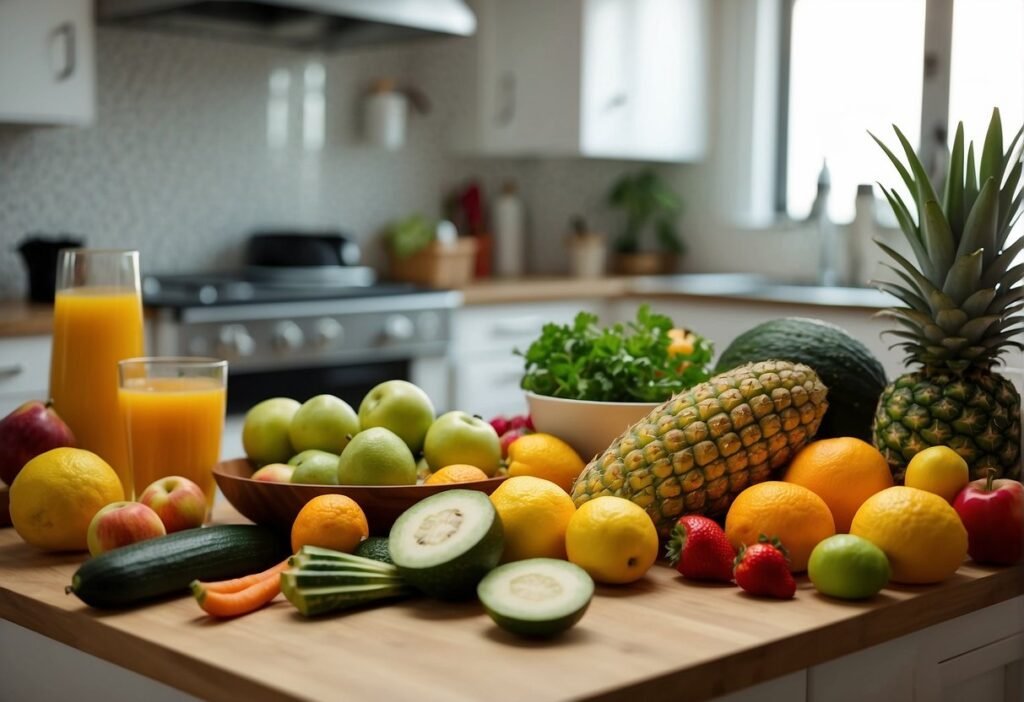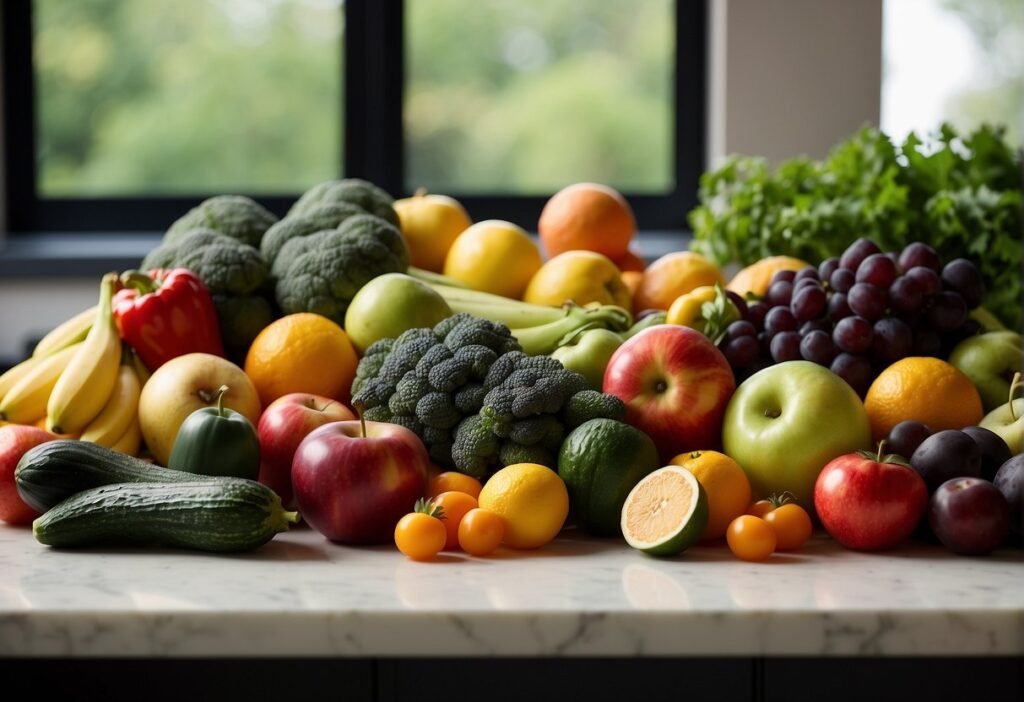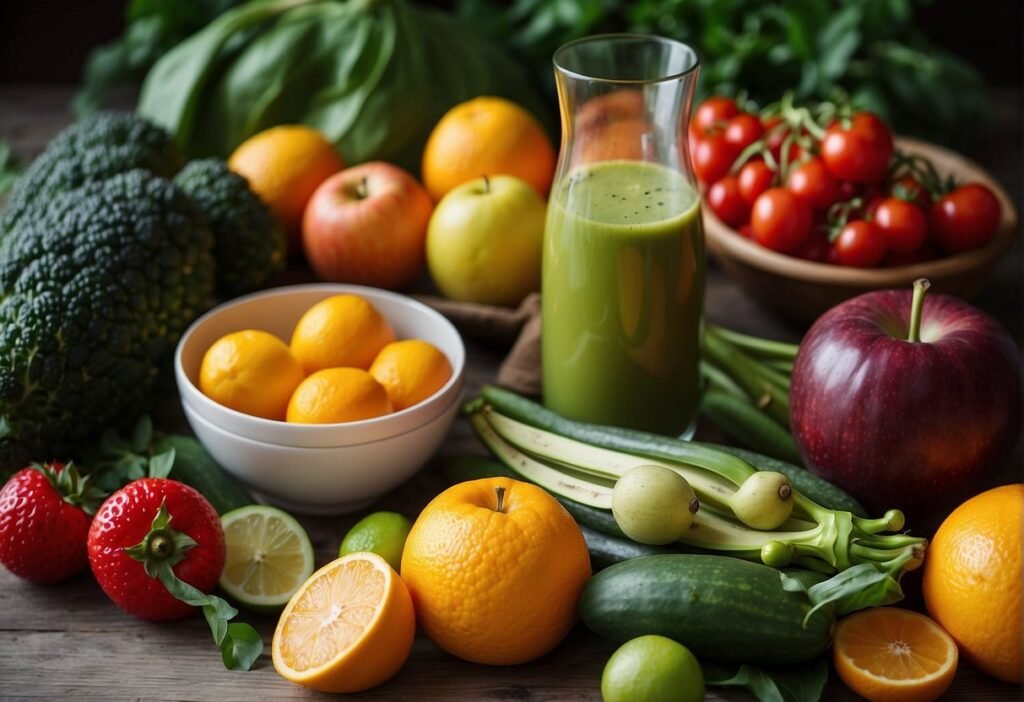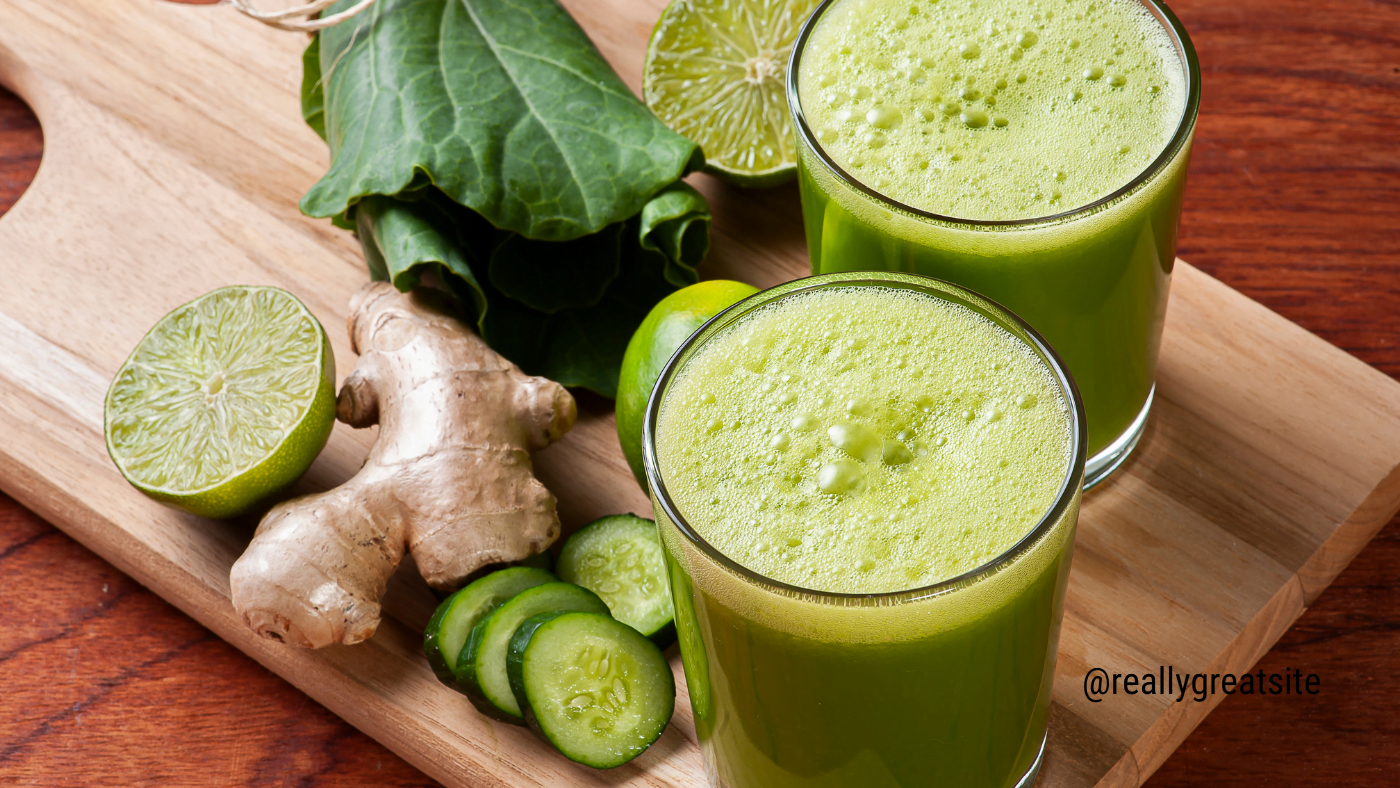Juicing Recipes to Lose Weight
Embarking on a weight loss journey often involves exploring various dietary methods, one of which includes juicing. Juicing for weight loss is a strategy that focuses on consuming nutrient-rich juices made from fruits and vegetables as a supplement to one’s diet. This approach promises not only a reduction in calorie intake but also an infusion of vitamins and minerals into the body. The process typically involves extracting the liquid content from produce, leaving behind most fibers, and thus creating a liquid that delivers nutrients directly to the body.

While juicing can be a beneficial addition to a weight loss plan, it’s imperative to understand how to select the right ingredients. Vegetables low in calories but dense in nutrients make for ideal choices. Moreover, certain fruits can add natural sweetness, though their sugar content is to be considered. Blending various combinations can cater to both palate preferences and nutritional needs. Adopting juicing techniques that preserve the maximum amount of nutrients and integrating these juices into daily habits without relying solely on them for nutrition are pivotal steps for success.
Key Takeaways
- Juicing can supplement weight loss by providing low-calorie, nutrient-dense drink options.
- Careful selection of ingredients ensures a balance between flavor and health benefits.
- Integrating juicing into a balanced diet, rather than using it exclusively, is crucial for health and weight management.
The Science of Juicing for Weight Loss
Juicing for weight loss revolves around understanding how the body metabolizes nutrients and the impact of caloric intake on body weight. These processes are integral to comprehending how juice diets can potentially contribute to weight loss goals.
Nutritional Components and Their Roles
Nutrients found in fruits and vegetables are central to any juicing diet for weight loss. Juices are often rich in vitamins and minerals, which are essential for the optimal functioning of the body’s systems.
- Vitamins such as vitamin C and B vitamins are important for maintaining metabolism and energy production.
- Minerals like potassium help in regulating fluid balance, which can be key during weight loss efforts.
- Fiber, although often lost during juicing, is important for digestive health. In whole fruits and vegetables, fiber aids in creating a sense of fullness and can reduce overall calorie intake.
A careful selection of ingredients can lead to concoctions that are low in calories yet nutrient-dense. This means they provide a high amount of nutrients with relatively few calories, which is ideal for weight management.
The Role of Juicing in Caloric Deficits
Creating a caloric deficit—where one consumes fewer calories than the body expends—is necessary for weight loss. Juices that are low in calories but high in nutritional value can play a part in such a strategy by offering satiety and nourishment without a high calorie count.
- A strategic juicing plan can supplement a balanced diet, helping individuals to stay within their calorie intake goals.
- Some ingredients used in juice diets have been associated with a fat-burning effect, although this is largely due to their role in a well-managed diet and not magical properties of any specific food.
Incorporating certain juices into one’s diet must be done thoughtfully, with an understanding of how they can help create the desired caloric deficit without compromising nutritional needs or metabolism.
Selecting Ingredients for Weight Loss Juices

Choosing the right ingredients is crucial for making weight loss juices. They should be low in calories but high in nutrients to support a healthy diet without excess sugar.
Optimal Fruits for Juicing
When selecting fruits for juicing, one should opt for those that provide a balance of taste and health benefits without a high calorie count. For example, apples offer a sweet flavor and are high in fiber. Oranges are noted for their vitamin C content. They add zest to any juice while aiding in immune support. Additional fruits like lemon and lime can bring a refreshing tang and help increase the metabolic rate. Pineapple, besides its tropical flavor, contains bromelain, which may aid in digestion.
Vegetables with Low Caloric Density
For low caloric density, vegetables are a go-to. Cucumbers and celery are hydrating and have minimal calories, making them ideal for weight loss juices. Carrots, while slightly sweet, are nutrient-dense and help add a satisfying flavor. Beets are another excellent choice, offering a hearty taste and numerous vitamins and minerals, along with compounds that may improve blood flow.
Incorporating Greens and Herbs
In terms of greens, spinach and kale are powerhouses packed with vitamins A, C, and K, and they blend well in juices without adding significant calories. Parsley and mint are herbs that not only impart refreshing flavors but also provide additional health benefits, such as aiding digestion and potentially improving heart health. Leafy greens, in general, contribute to a nutrient-dense, low-calorie juice suitable for weight loss.
Juicing Recipes and Combinations

Within this section, readers will find a selection of juicing recipes and combinations to harness the natural weight loss benefits of fruits and vegetables through delicious, nutritious beverages.
Green Juice Blends
Green juice blends are a cornerstone in weight loss juicing routines, delivering a potent mix of vitamins and minerals. A popular healthy green juice that supports weight loss includes alkalizing pineapple, hydrating cucumber, immune-boosting lemon or lime, and fresh ginger root. These ingredients are blended with nutrient-rich spinach and parsley for a low-calorie, detoxifying drink.
Example Recipes:
- Spinach-Pineapple Detox Juice: Combines pineapple, cucumber, lemon, ginger, spinach, and parsley.
- Very Veggie Green Juice: Utilizes a variety of green vegetables for a chlorophyll-rich juice.
Sweet and Tangy Juice Mixes
Sweet and tangy juice mixes strike a balance between flavor and health benefits. A refreshing watermelon juice can be especially satisfying for those looking to lose weight while enjoying naturally sweet flavors.
Example Recipes:
- Carrot-Orange-Ginger Juice: Merges the natural sweetness of carrots with the zest of orange and the kick of ginger.
- Watermelon-Cucumber-Mint Juice: A hydrating mixture that pairs watermelon with cucumber and a hint of fresh mint.
Juice Recipes for Cleansing
Detox juice recipes contribute to body cleansing by providing a rich source of antioxidants and fiber. These recipes often feature a combination of vegetables and fruits that support the body’s natural detoxification processes.
Example Cleansing Juices:
- Powerhouse Cabbage Juice: Includes a blend of cabbage, spinach, and other greens.
- Citrus Beet Cleanser: Combines beetroot with citrus fruits for a liver-supporting beverage.
Each recipe offers a unique combination of flavors and nutrients, providing options to suit different tastes and health goals. Whether one is looking for a vegetable juice or a fruit-forward drink, these recipes lay the foundation for incorporating more healthful juices into a weight loss plan.
Juicing Techniques and Tips

Juicing for weight loss not only requires healthy recipes but also the correct technique and equipment. Knowing the nuances of juicing methods can greatly influence the quality and effectiveness of the juice diet.
Using the Right Juicer
Selecting the appropriate juicer is crucial for anyone embarking on a weight loss journey with the help of homemade juices. Masticating juicers, also known as cold press juicers, are often recommended for their ability to slowly crush fruits and vegetables, extracting high volumes of juice and preserving the delicate nutrients.
Blend vs Juice: Understanding the Difference
Understanding the difference between blending and juicing is important for weight loss results. Blenders create a smoothie-like texture, retaining fiber which is essential for digestion. Juicing, however, separates juice from the fiber, concentrating the nutrients and possibly aiding in quicker digestion. However, it is important to maintain a balance; fiber is crucial for long-term health.
Maximizing Nutrient Preservation
The key to maximizing nutrients in juicing recipes for weight loss is to juice immediately before consumption. Heat and oxidation can break down nutrients, so using a slow-speed masticating juicer and consuming the juice immediately after production can ensure the highest nutrient content is retained in homemade juices.

Lifestyle Integration of Juicing
Integrating juicing into one’s lifestyle warrants a thoughtful approach to maintain a healthy balance. The key is to ensure that juices complement a diet rich in whole foods while providing a boost of vitamins and antioxidants without overstating their benefits.
Balancing Juicing with Whole Foods
Juicing can be a resourceful way to increase one’s intake of vitamins and antioxidants found in veggies and fruits. However, it should serve as an addition to, not a replacement for, consuming whole foods. Whole foods provide essential dietary fibers that are often lost during the juicing process, which are crucial for digestion and maintaining a healthy diet.
- Cleanse & Detoxification: While some advocate for a juice cleanse as a detoxification method, one should be cautious and understand that the body is naturally equipped with organs such as the liver and kidneys for detox and cleansing processes.
- Hydration: Homemade juices are effective for hydration, but their role in weight loss should be considered supplementary to a balanced diet and exercise regimen.
Incorporating Juicing into a Healthy Diet Plan
Incorporating homemade juice into a healthy diet plan can contribute to weight loss and bolster the immune system if done judiciously. Juices can replace high-calorie processed drinks and provide a refreshing alternative while delivering condensed nutrients.
- Meal Planning: Integrate juices with meals or as part of a snack, ensuring that the overall calorie intake is aligned with the weight loss goals.
- Vegetable-Focused Juices: Emphasize vegetable-based juices with a small inclusion of fruit to keep sugar content low. This maintains a balanced diet while maximizing nutrient intake.
By integrating juicing into a healthy diet in an informed manner, individuals can enjoy the benefits without compromising nutritional integrity or losing weight ineffectively.
Health Considerations and Best Practices
Before embarking on a juicing journey for weight loss, it’s crucial to understand the potential risks and establish best practices for responsible consumption that supports sustainable weight loss.
Understanding the Risks of Juice Fasts
Juice fasts can lead to quick water weight loss rather than fat loss due to their low calorie content. However, such fasts can also cause a rapid decrease in blood sugar levels, leading to dizziness and fainting. While juice fasts may lower caloric intake, they can lack essential fats and proteins, impacting digestion and satiety. Limited intake of solid foods during a juice fast may lead to decreased fiber consumption, an important nutrient for maintaining healthy digestive functions. Additionally, it’s critical to consider that a high sugar intake from fruit juices can inadvertently increase blood pressure and inflammatory responses in the body.
- Risks:
- Decreased blood sugar
- Reduced satiety
- Lower fiber intake
- Increased blood pressure
- Potential for increased inflammation
Responsible Consumption and Sustainable Weight Loss
To achieve sustainable weight loss, it’s advisable to integrate juices as a part of a balanced diet rather than relying solely on juice fasts. Fresh juices can offer a high water content and anti-inflammatory properties, and are a good source of certain vitamins and minerals such as potassium and magnesium. However, they should be consumed in moderation and as part of a diet that includes a variety of whole foods to ensure adequate nutrient intake.
- Best Practices:
- Include juices within a balanced diet
- Limit juice portion sizes to manage sugar intake
- Pair juices with meals to enhance satiety
- Choose juices with a higher ratio of vegetables to fruits to reduce sugar content
- Opt for whole fruits and vegetables to maintain fiber intake
Frequently Asked Questions
Juicing for weight loss involves understanding the best combinations of fruits and vegetables and how to incorporate them into one’s diet. This section answers common inquiries to help make informed decisions and get started with juicing.
What are some effective juice recipes for losing belly fat?
Juicing recipes that may help with losing belly fat typically include ingredients like celery, spinach, cucumber, and apples. A popular recipe combines these ingredients and adds ginger and orange for flavor, along with a spoonful of honey for sweetness.
What combinations of fruits and vegetables make the best weight loss juices?
For weight loss, juicing combinations that have a high fiber content and are low in calories are ideal. Leafy greens like spinach and kale mixed with low-calorie fruits such as berries and citrus fruits are suggested for their satiating and nutrient-dense properties.
How can beginners get started with juicing for weight loss?
Beginners are advised to start with simple recipes and familiar produce. A blend created from cucumbers, lemons, apples, and a touch of ginger offers a refreshing and nutrient-rich start, perfect for easing into a juicing routine.
Are there any quick and easy juice recipes that can aid in weight loss?
Yes, quick and easy recipes often involve a few readily available ingredients such as apples, spinach, or carrots. These can be juiced in minutes for a healthy, weight-loss-friendly drink.
How can juicing be incorporated into a morning routine to assist with weight loss?
Incorporating juicing into a morning routine can be as easy as making a quick juice using ingredients like apple and spinach. This provides a fiber-rich, low-calorie start to the day that can support weight loss efforts.
What results can be expected from a short-term juice cleanse for weight reduction?
A short-term juice cleanse can lead to initial weight loss, which is often a result of reduced calorie intake and fluid loss. The exact results can vary, but it’s important to maintain realistic expectations and focus on a balanced approach to diet and lifestyle.

